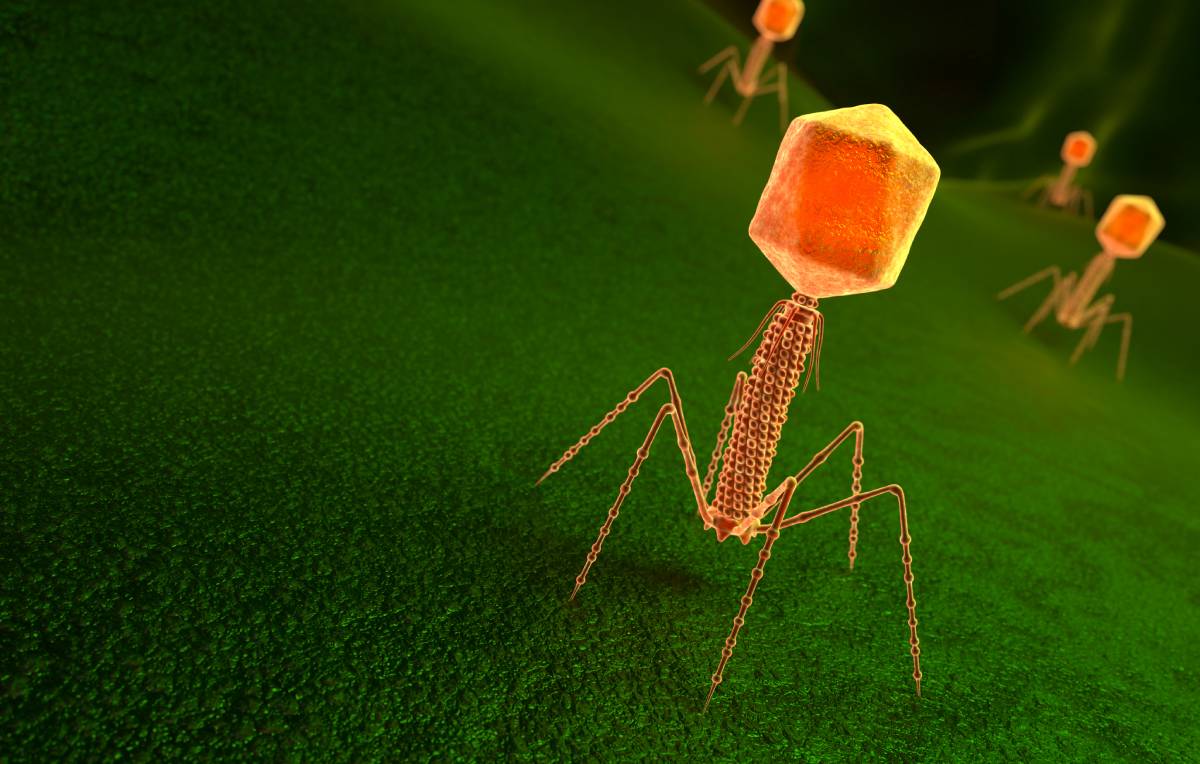Antibiotics are used to fight bacterial infections [1]. Over the last several decades, however, their overuse has caused some bacterial strains to develop resistance, making certain antibiotics ineffective against those strains [1]. More recently, antibiotic resistance has become so dire that, in 2016, the United Nations called it “the greatest and most urgent global risk” [4]. It has also been estimated that “some seven hundred thousand people die each year as a direct result of drug-resistant infections, a number that is predicted to rise to ten million by 2050” [4]. Scientists propose that a promising solution to this problem could be phage therapy, an experimental treatment that uses phages to treat and prevent bacterial infections [1,2,3,4].
“Phages, or bacteriophages, are viruses that infect only bacteria” [4]. Despite being “the most abundant biological entities on earth,” and “destroying half the world’s bacteria every forty-eight hours,” not all phages are effective at killing drug-resistant bacteria [4]. To find those that are, scientists search in places where people or animals have shed them—typically in sewage, compost, or waste-runoffs [4]. They then test their findings against specific bacterial infections. “If the liquid contained a single phage that was a match for this particular host, that phage would bind to the bacterial cell membrane and insert its genome into the fluid-filled interior” [4]. After successfully entering the cell, “the phage would take over, mimicking and exploiting the bacterium’s own signaling pathways in order to force the cell’s protein-manufacturing machinery to start printing out copy after copy of the phage genome instead” [4]. Eventually, the cell would erupt, “releasing a horde of phages ready to invade the next bacterial cell” [4].
“Although it is still considered an experimental treatment in the U.S., phages have been used to treat and prevent bacterial infections since their discovery, more than a century ago,” [4] and their application has shown much success. In 2019, Nature Medicine published a paper [3] on how phage therapy had helped save “the life of a teen-age cystic-fibrosis patient in the U.K., who was stricken with a bacterial infection after a double lung transplant” [4]. Over seven months of continuous phage treatment, the patient showed significant improvements, including “gradual healing of [the] surgical wound and skin lesions and improvement of lung function and liver function” [3]. A 2020 study examined a patient “who had suffered multiple episodes of prosthetic knee infection despite numerous surgeries and prolonged courses of antibiotics” [2]. When phage therapy was administered, it “resulted in resolution of local symptoms and signs of infection and recovery of function,” preventing leg amputation. Neither patient showed adverse side-effects [2,3].
Despite the acceleration of phage therapy research and development and the growing number of success stories, it “is still a long way from being a standard treatment” [4]. “Each patient requires a waiver from the F.D.A. and approval from the review board of whatever medical facility is involved, and health insurance doesn’t cover any of the costs” [4]. Additionally, it is still unclear which phages are best for treating certain infections and what adverse side-effects may occur [1]. More funding and clinical trials are necessary before phage therapy can become accepted into standard medical care [1,2,3,4].
References
1. Biscontini, T. (2020). Phage therapy. Salem Press Encyclopedia of Health.
2. Cano, E. J., Caflisch, K. M., et al. (2020). Phage Therapy for Limb-threatening Prosthetic Knee Klebsiella Pneumoniae Infection: Case Report and In Vitro Characterization of Anti-biofilm Activity. Clinical Infectious Diseases: An Official Publication of the Infectious Diseases Society of America. doi: 10.1093/cid/ciaa705
3. Dedrick, R. M., Guerrero-Bustamante, C. A., et al. Engineered Bacteriophages for Treatment of a Patient with a Disseminated Drug-resistant Mycobacterium Abscessus. (2019). Nature Medicine, 25(5), 730–733. doi: 10.1038/s41591-019-0437-z
4. Twilley, N. (2020). When a Virus is the Cure. The New Yorker (December 21, 2020 Issue). https://www.newyorker.com/magazine/2020/12/21/when-a-virus-is-the-cure
